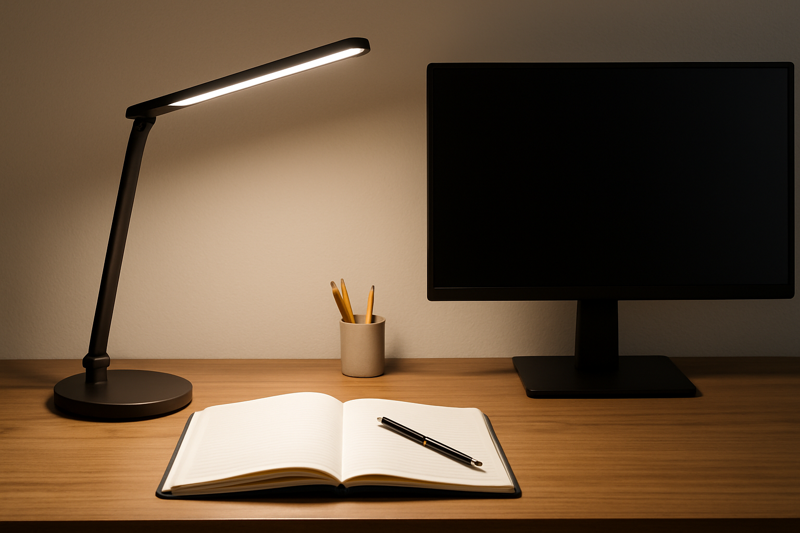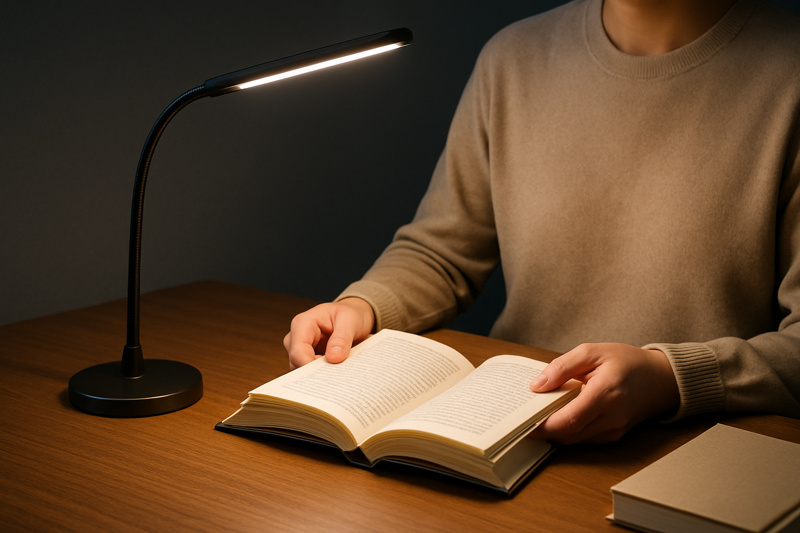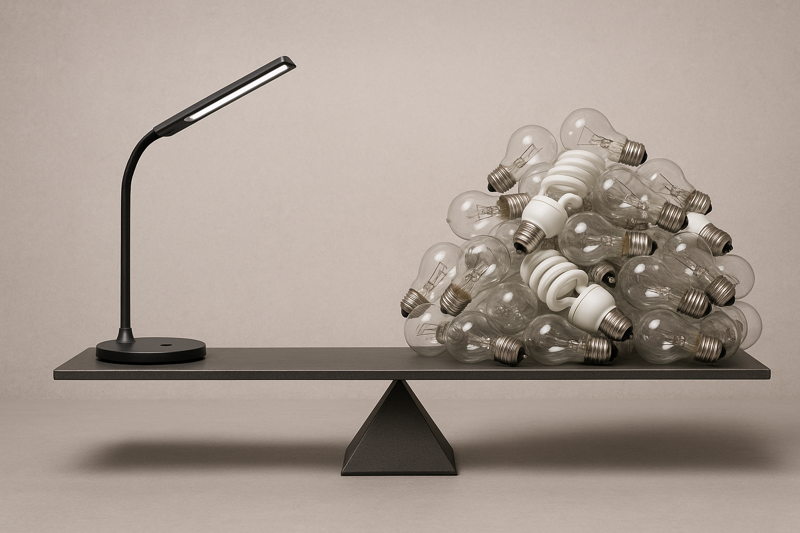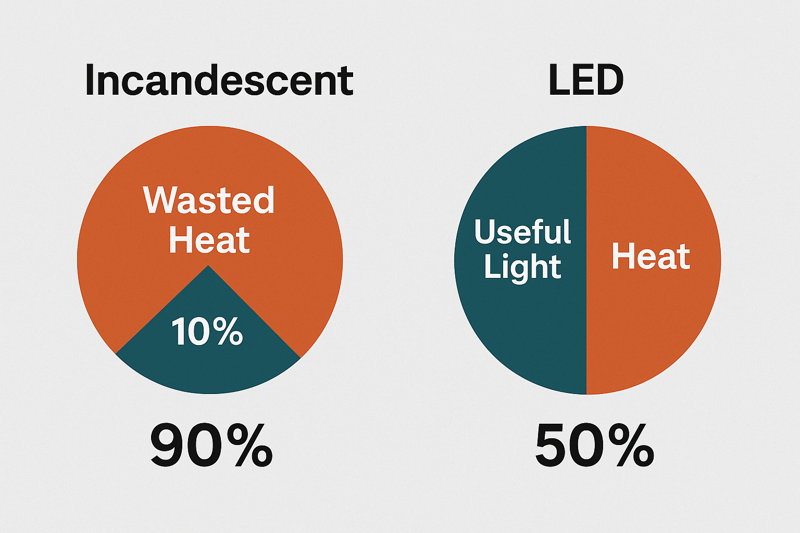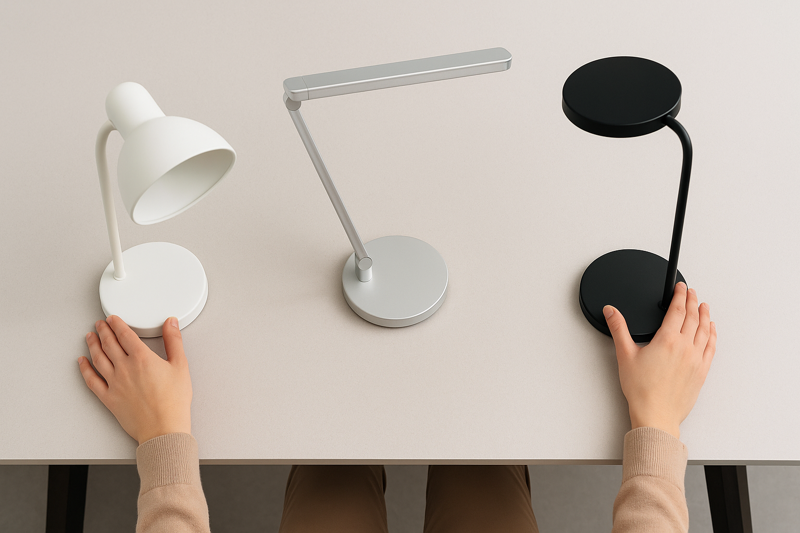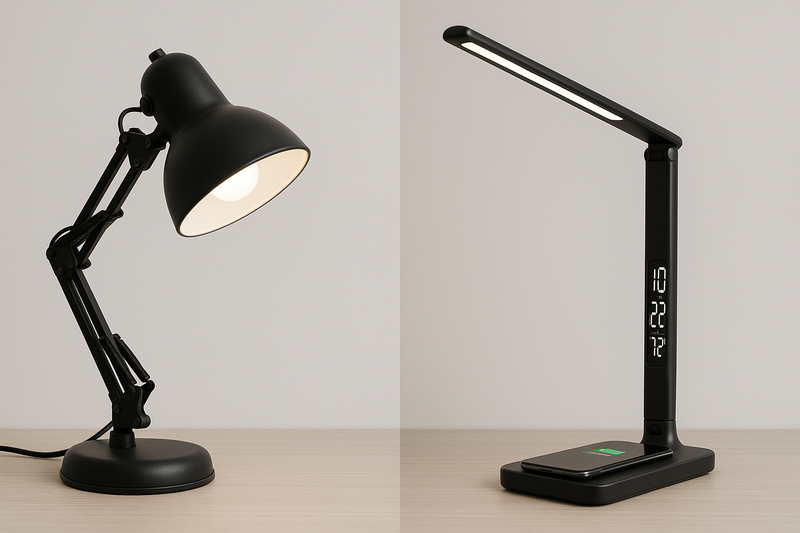
Remember old desk lamps? They were hot, inefficient, and only did one thing: give off harsh light. This costs you money and causes eye strain. Now, LED technology has transformed these simple objects.
LED technology has revolutionized the desk lamp by replacing bulky, inefficient bulbs with compact, energy-saving light sources, enabling vast improvements in light quality, adjustability, smart features, and physical design.
Let's explore how this fundamental shift from the traditional bulb to the LED chip changed everything.
Did We Ever Think Light Itself Could Be So Controllable?
Were you stuck with lamps that were just "on" or "off," with one fixed color? That lack of control is terrible for your eyes. Imagine precisely tuning your light for any task with a simple touch.
LED technology enables granular control over lighting, offering intuitive stepless sliding dimmers for brightness and multiple color temperature modes, from a warm 3000K to a cool 6000K.
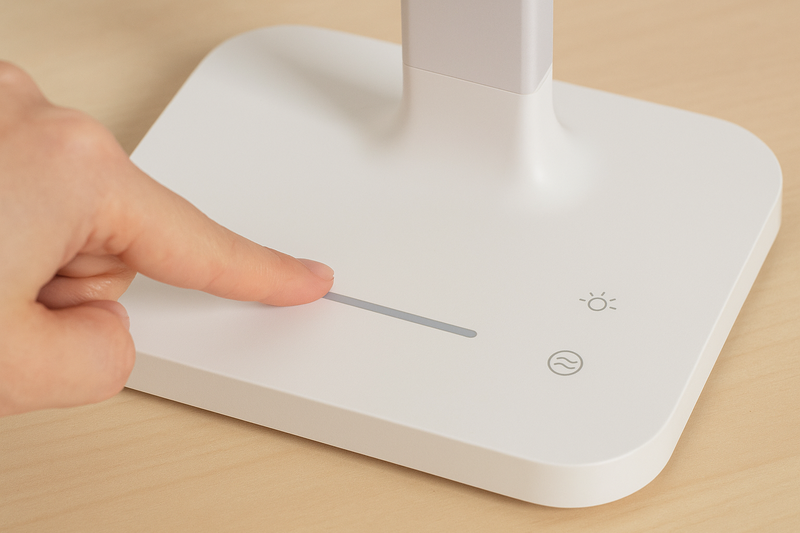
As a manufacturer, the biggest leap I witnessed was in user control. Traditional lamps gave you no choice. You got one color of light, and if you were lucky, maybe a "high" and "low" setting. LED technology blew that wide open. Because LEDs are semiconductors, their intensity can be managed with precision. This led to the creation of the "sliding dimmer." Instead of a clunky switch, you just slide your finger along a progress bar on the lamp's base to get the exact amount of light you need. It’s an incredibly intuitive experience. But the real game-changer was the control over light color. By using different sets of LED chips, like our models with both 3000K and 6000K diodes, we can let the user change the color temperature with a single touch. You can select a warm, cozy light for evening reading or a crisp, cool white light for focused morning work. This was simply impossible with a single incandescent bulb. This ability to tailor both brightness and color transforms the lamp from a blunt instrument into a precision tool for your workspace.
From Binary to Infinite Control
The shift from a physical on/off switch to a stepless dimmer is a move from a binary choice to infinite possibilities. You are no longer forced to accept "too bright" or "too dim."
Crafting Your Environment with Light
Adjustable color temperature1 allows you to use light to influence your mood and productivity. You can match the light to your task or even your body's natural circadian rhythm.
| Feature | Traditional Bulb Lamp | Modern LED Lamp |
|---|---|---|
| Brightness Control | On/Off switch, maybe 2 levels. | Stepless sliding dimmer for infinite adjustment. |
| Color Control | One fixed, unchangeable color (usually warm white). | 5 modes of color temperature1 (3000K to 6000K). |
| User Interface | A physical, clunky switch. | A seamless, touch-sensitive control panel. |
How Did a New Bulb Actually Make Our Eyes Healthier?
Do you suffer from headaches or tired eyes after working at your desk? Your old, flickering lamp could be a hidden cause of that pain. Now, discover how new technology is engineered to protect your vision.
Advanced LED technology offers soft, high-quality light with no glare and no invisible strobing, providing crucial eye protection during long hours of use and an ultra-long, consistent lifespan.
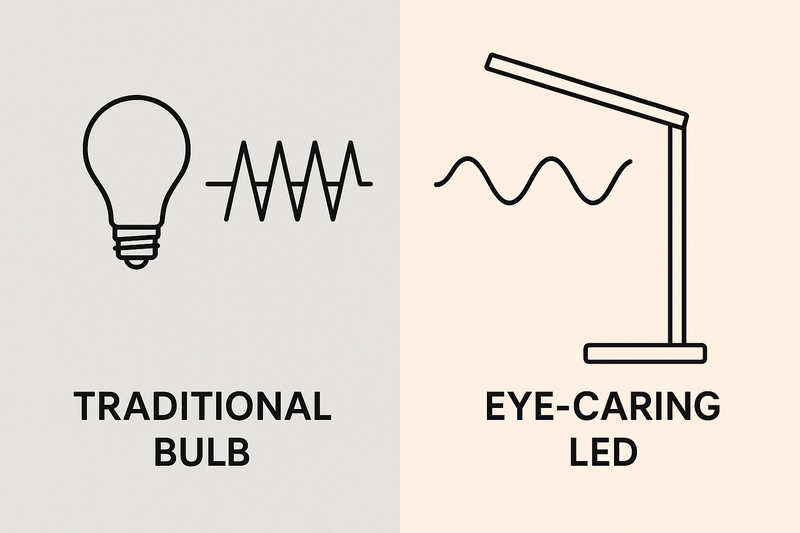
From my perspective in product development, the most important revolution brought by LEDs is in health and well-being. Early lighting, especially fluorescent bulbs, was notorious for high-frequency flickering, or "strobing." Even if your eyes can't see it, your brain is processing this rapid flashing, which is a major cause of eye strain, fatigue, and headaches. Our "Advanced Lighting Technology" is built around LEDs that provide a stable, constant stream of light with "no glare, no strobe." This makes a massive difference in comfort over a long workday. Beyond stability, LEDs offer better quality light. We measure this with the Color Rendering Index (CRI), and our lamps achieve over 80Ra, meaning colors look true and natural, not washed out. Finally, there's longevity. Traditional bulbs degrade and change color as they age. Our LEDs have an "ultra-long life" of 20,000 hours with "very small light decay." This means the high-quality, eye-caring light you get on day one is the same light you’ll have years later.
The Invisible Problem: Flicker
The stability of the light source is paramount for eye comfort. LED's solid-state nature allows it to produce a much more stable light beam than the gas-and-filament systems of older bulbs.
Light That Lasts
The incredible lifespan of an LED means fewer replacements, less waste, and a more consistent lighting experience over the entire life of the product. You can trust the light to stay true.
| Lighting Aspect | Incandescent Bulb | Fluorescent (CFL) Bulb | Modern LED Lamp |
|---|---|---|---|
| Flicker (Strobe) | Low to moderate. | High (notorious for flicker). | Virtually none. |
| Heat Output | Very High (90% energy lost as heat). | Moderate. | Very Low. |
| Lifespan2 | ~1,000 hours. | ~8,000 hours. | 20,000+ hours. |
| Eye Comfort3 | Fair (warm but inefficient). | Poor (often harsh and flickery). | Excellent (no glare, no strobe). |
Why Are We Suddenly Charging Our Phones With Our Lamps?
Is your desk a mess of tangled cables for every single gadget? That clutter is a constant source of stress and distraction. What if your lamp could consolidate all that mess into one device?
The extreme energy efficiency and low power requirements of LEDs freed up the "power budget," allowing manufacturers to integrate smart features like Qi wireless chargers and USB ports into the lamp itself.
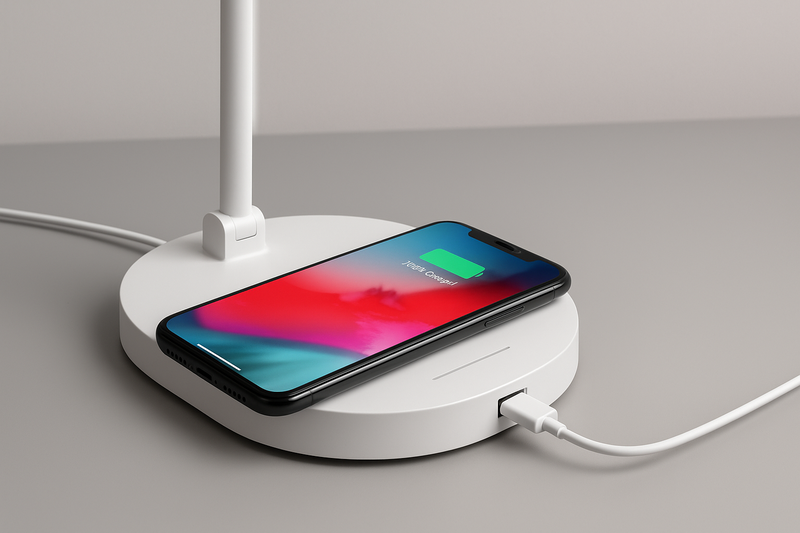
I remember the design meetings where this shift happened. Traditional incandescent lamps were incredibly power-hungry. Nearly all the electricity they drew was wasted as heat, leaving no extra power for other functions. But LEDs changed the entire equation. An LED light source is so efficient that it can be powered by a simple, low-voltage DC input. This means there is a ton of "power budget" left over. We could suddenly ask, "What else can this product do?" The first and most obvious answer was charging. We integrated 10W Qi high-speed wireless charging directly into the lamp's base. Just put your phone down, and it charges. We then added a 5V 2.1A high-speed USB output on the back for other devices. But it didn't stop there. Since the lamp already had power and was a central object on the desk, we added an "innovative display perpetual calendar clock." This HD screen shows the time, date, and temperature, and even includes a full alarm clock function. LED technology didn't just change the light bulb; it turned the entire lamp into a smart hub for your desk.
The Power Revolution
It wasn't just about saving energy; it was about repurposing it. The energy saved by using LEDs was channeled back into features that make our lives more convenient.
The Great Consolidation
By integrating these features, a single LED lamp can replace a lamp, a phone charger, a USB hub, and an alarm clock, radically decluttering your workspace.
| Device/Function | Traditional Desk Setup | Smart LED Lamp Setup4 |
|---|---|---|
| Lighting | Separate desk lamp. | Integrated eye-caring LED light5. |
| Phone Charging | Separate charging pad or cable. | Built-in 10W Qi wireless charging pad. |
| Other Gadgets | Separate USB power brick. | Built-in 5V/2.1A USB port. |
| Time/Alarm | Separate alarm clock or phone. | Integrated HD display with clock and alarm. |
How Did Tiny LEDs Allow for Radically New Lamp Shapes?
Have you ever wondered why old lamps were so bulky and rigid? They had to be built around a large, fragile glass bulb. Imagine a lamp designed with total physical freedom.
Because LED light sources are tiny, solid-state chips instead of large bulbs, designers were freed from old constraints, enabling the creation of minimalist, flexible, and foldable lamp structures.
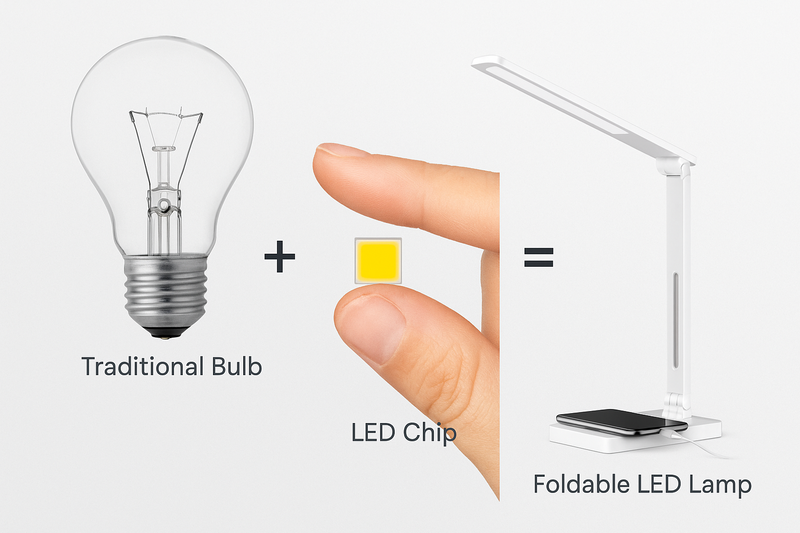
For decades, lamp design was dictated by the light bulb. You needed a big socket to screw it into and a large shade to diffuse its harsh glare. The lamp's form was a slave to the bulb's function. Then came the LED. Our light source went from a delicate glass sphere to a tiny, durable semiconductor chip, like the 2835 model we use. This was the ultimate liberation for designers like me. We no longer needed a bulky head or shade. We could embed a series of these tiny chips into a slim aluminum profile. This unlocked entirely new possibilities for the lamp's physical form. Suddenly, we could create lamps with a "folding structure" that collapse into a "smaller volume," saving precious desk space. We could engineer multi-jointed arms and heads with a "three-dimensional and omni-directional lighting angle," where the lamp cap supports 180° rotation. These sleek, minimalist, and acrobatically flexible designs that are common today were physically impossible just a couple of decades ago. The tiny LED chip didn't just improve the light; it completely reshaped the object that delivers it.
The Death of the Bulb
Moving from a fragile, gas-filled glass bulb to a robust, solid-state chip was the most important physical innovation in lighting in a century. It changed all the rules of design.
Form Finally Follows Function
With LEDs, the light source became so small that it was no longer the defining constraint. This allowed designers to focus on the user's needs, creating flexible and foldable forms6 that truly serve the task at hand.
| Design Element | Incandescent Bulb Lamp | Modern LED Lamp6 |
|---|---|---|
| Light Source | Large, fragile glass bulb. | Tiny, durable solid-state chips. |
| Lamp Head | Bulky head/shade required to house the bulb. | Slim, minimalist profile. |
| Flexibility | Rigid or very limited joints. | Multi-jointed arms, 180° rotation, foldable. |
| Overall Form | Bulky, large footprint. | Sleek, lightweight, space-saving. |
Conclusion
LEDs did more than change a bulb; they started a revolution, turning lamps into smart, eye-caring, and flexible workspace tools.
-
Understanding color temperature can help you choose the right lighting for your space, enhancing both mood and productivity. ↩ ↩
-
Understanding the lifespan of LED lights can help you make informed choices for energy efficiency and cost savings. ↩
-
Exploring eye comfort differences can enhance your lighting choices for better health and well-being. ↩
-
Discover how a Smart LED Lamp can streamline your workspace and enhance productivity. ↩
-
Learn about the advantages of eye-caring LED lights for better health and comfort while working. ↩
-
Discover how flexible and foldable forms revolutionize design, making products more adaptable to user needs. ↩ ↩


